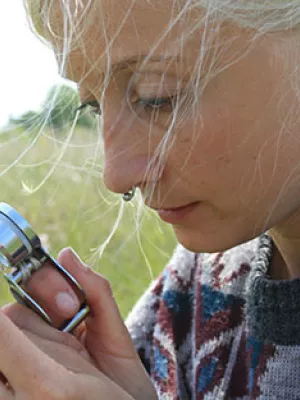
Lina Herbertsson
Researcher

Effects of landscape composition and configuration on pollination in a native herb: a field experiment.
Author
Summary, in English
Bumble bee abundance in agricultural landscapes is known to decrease with increasing distance from seminatural grasslands, but whether the pollination of bumble-bee-pollinated wild plants shows a similar pattern is less well known. In addition, the relative effects of landscape composition (landscape heterogeneity) and landscape configuration (distance from seminatural grassland) on wild plant pollination, and the interaction between these landscape effects, have not been studied using landscape-level replication. We performed a field experiment to disentangle these landscape effects on the pollination of a native herb, the sticky catchfly (Lychnis viscaria), while accounting for the proportion of oilseed rape across landscapes and the local abundance of bee forage flowers. We measured pollen limitation (the degree to which seed set is pollen-limited), seed set, and seed set stability using potted plants placed in landscapes that differed in heterogeneity (composition) and distance from seminatural grassland (configuration). Pollen limitation and seed set in individual plants did not respond to landscape composition, landscape configuration, or proportion of oilseed rape. Instead, seed set increased with increasing local bee forage flower cover. However, we found within-plant variability in pollen limitation and seed set to increase with increasing distance from seminatural pasture. Our results suggest that average within-plant levels of pollen limitation and seed set respond less swiftly than the within-plant variability in pollen limitation and seed set to changes in landscape configuration. Although landscape effects on pollination were less important than predicted, we conclude that landscape configuration and local habitat characteristics play larger roles than landscape composition in the pollination of L. viscaria.
Department/s
- Centre for Environmental and Climate Science (CEC)
- Biodiversity
- BECC: Biodiversity and Ecosystem services in a Changing Climate
- Biodiversity and Conservation Science
Publishing year
2015
Language
English
Pages
509-518
Publication/Series
Oecologia
Volume
179
Issue
2
Document type
Journal article
Publisher
Springer
Topic
- Ecology
Status
Published
Research group
- Biodiversity and Conservation Science
ISBN/ISSN/Other
- ISSN: 1432-1939